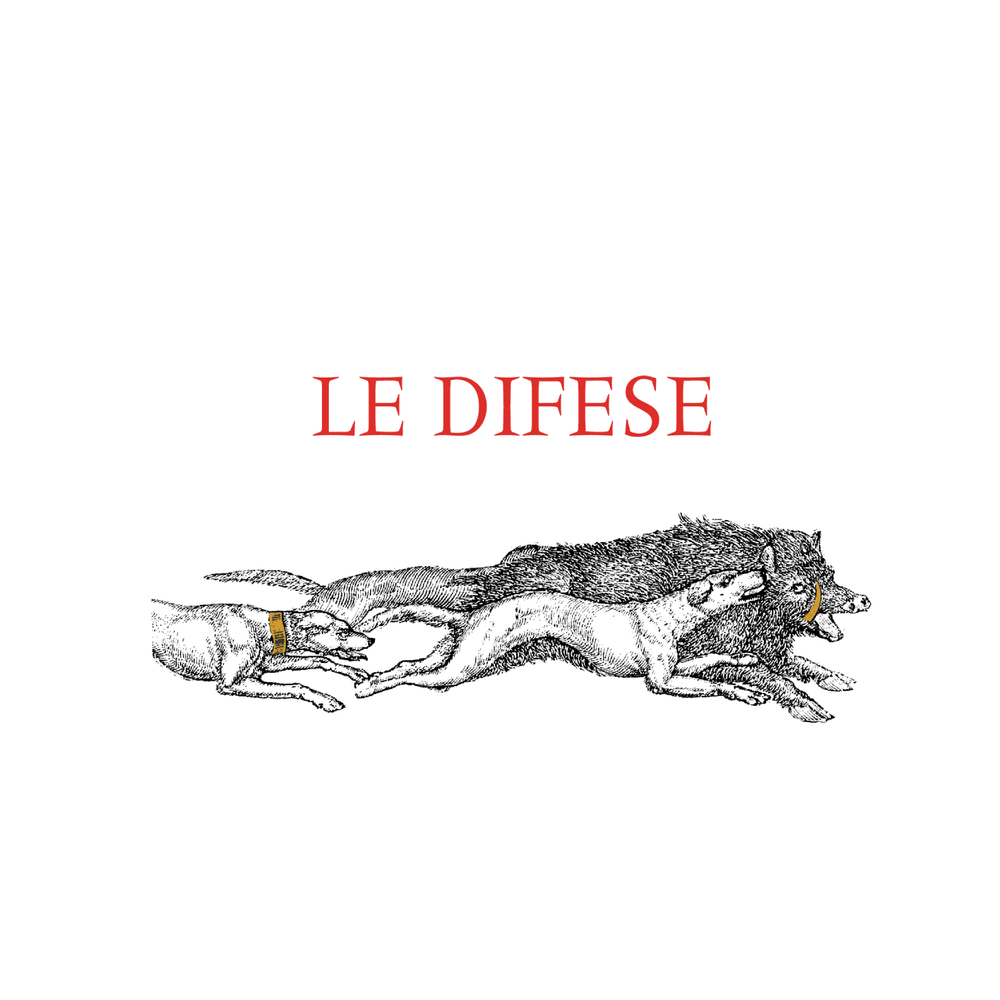Data Sheet
LE DIFESE 2020
CLASSIFICATION
IGT - Toscana
FIRST VINTAGE ON THE MARKET
2002
GRAPES
Cabernet Sauvignon, Sangiovese

Le Difese
SOIL STYLE
The soils on which the vineyards stand has varied and complex terrain features with a strong presence of limestone, feature areas rich in marl and pebbles as well as being partly clayey; they sit at an altitude of between 100 and 300 metres above sea level, with a south/south-west exposure.
WEATHER TRENDS
The year tended to be hot. The autumn was wet with heavy rainfall from mid-October until the end of December. Temperatures were quite mild and sometimes even above the seasonal average. From February came the intense cold with temperatures dropping to almost 0°C. March began with strong sea winds and rain, but with mild temperatures that contributed to bud swelling, especially of early varieties of grape such as Merlot.
At the end of March, a disturbance coming from the Balkans brought a sharp drop in temperatures with tramontana winds and some night frosts. The month of April, but also much of May, was mild, with sunny days and average temperatures alternating with rainy days and cooler air. Daytime temperatures rose in contrast to nighttime temperatures, which remained below the seasonal average. The first ten days of June saw heavy rain and a drop in temperature, especially at night and in the early morning, with temperatures not exceeding 25-26°C. After mid-June, the weather recovered, bringing sunny and warm days. This heat was interrupted by a mid-July weather disturbance, which helped to lower temperatures and offered coolness to the vines. August, on the other hand, was a very hot month with temperatures above the seasonal average, causing the technical ripening of the grapes to be brought forward. Fortunately, a disturbance at the end of August prevented the plants from going into stress, but the ripening of the grapes, also due to the hot and humid weather, brought the harvest time forward by about a week.
HARVESTING
The harvest, carried out by hand with careful selection of the grapes, began on September 5 for the Cabernet Sauvignon and was completed at the end of the month with the Sangiovese. The harvest has been quicker in 2020 due to the rapid maturity reached by the grapes, and not
wanting to exceed the alcohol content, but also for the lower production. In this vintage of
Le Difese there is a higher percentage of Sangiovese than the norm, due to the excellent quality
maturity of the grapes which gave excellent results.
FERMENTATION
Careful selection and sorting of the bunches by hand. Soft destemming of the grapes.
Primary fermentation took place in stainless steel vats at a controlled temperature (27-28°C). Maceration on the skins for 13-15 days for the Cabernet Sauvignon and for about 14-18 days for the Sangiovese, with successive phases of pumping over and frequent deléstage to stimulate aromatic extraction and soften the tannins. Malolactic fermentation was carried out in steel and concluded towards the end of November.
AGEING
At the end of the malolactic fermentation, the wine remains in steel for about 3-4 months and temperatures are kept around 10 ° C. Periodic decanting is carried out to eliminate the sediments. The wine then undergoes an aging in wood, with French oak barriques previously used for Sassicaia and Guidalberto, for an average period ranging from 6 to 8 months. At the end of the aging period in wood, the wine returns into the steel tanks where the temperature is stabilized for about 20 days at around 4-5 ° C for the necessary tartaric stabilization, before bottling.